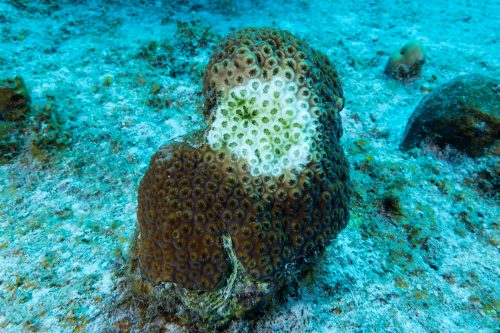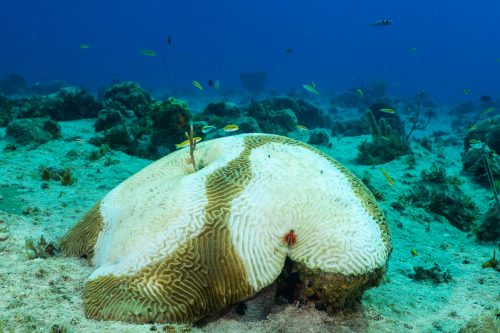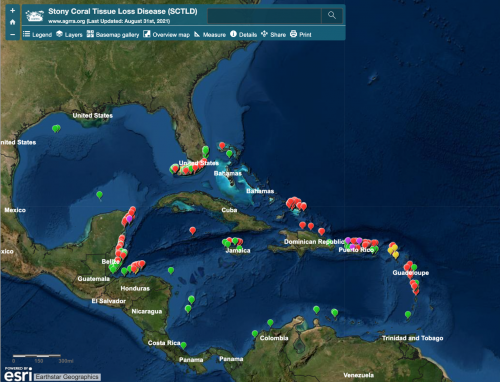What’s going on?
First reported in 2014, stony coral tissue loss disease has infected more than 30 species of corals ranging over 96,000 acres throughout Florida’s Reef Tract.
When infected, the coral’s tissue cells rupture and die. The cause for this disease is still unknown, but the use of antibiotics on infected corals is proving effective in combating disease progression.
Areas affected:
Key:
Purple – Sighting reported
Green – Stony coral tissue loss disease not present
Red – Stony coral tissue loss disease present
To view a map showing how the disease has progressed in Florida, visit: Stony Coral Tissue Loss Disease Occurrence Across Florida’s Reef (NOAA)
What does it look like?

White lesions depicting tissue loss are prevalent on infected coral.

The distinct white color indicates areas of exposed skeleton.
Why it matters
Coral reefs provide some of the most distinct and varied marine ecosystems in the world. Florida’s coral reef is the only barrier reef in the continental U.S., providing a home for countless organisms.
Five of the species affected by stony coral tissue loss disease are protected under the U.S. Endangered Species Act.
The disease targets many coral species, but some are foundational corals that aid in reef-building. Once a coral has contracted the disease and begins to lose living tissue, the entire colony can perish in a period of weeks to months.
What you can do
- Report any instances of disease to AGGRA, the Atlantic and Gulf Rapid Reef Assessment.
- Become a Reef Ambassador (through the Florida Department of Environmental Protection) to advocate for the reefs in your community!
- Decontaminate your gear & equipment between dive sites.
- Report healthy and diseased corals to SEAFAN, the Southeast Florida Action Network.
More information
For more information, visit:
- https://floridadep.gov/rcp/coral/content/stony-coral-tissue-loss-disease-response
- https://myfwc.com/research/habitat/coral/disease/overview/
- https://www.agrra.org/coral-disease-outbreak/
Information from the Florida Department of Environmental Protection, Florida Fish and Wildlife Conservation Commission, and the Atlantic and Gulf Rapid Reef Assessment.
